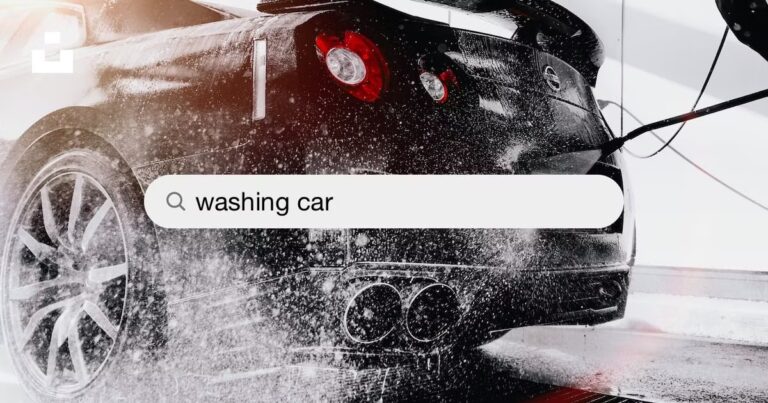Cleaning vs. Detailing: Understanding the Key Differences for Your Car
Your car is one of your most prized possessions. It’s a reflection of who you are, your personality, and your sense of style. Keeping it clean and well-maintained not only makes it look good but also increases its lifespan and value. However, when it comes to car care, many people use the terms “cleaning” and “detailing” interchangeably. Although both involve cleaning your car, they are not the same thing. In this article, we’ll discuss the differences between cleaning and detailing and help you choose the right approach for your car.
What is cleaning?
Cleaning your car is a basic process that involves removing dirt, dust, and grime from the exterior and interior of your vehicle. It’s a routine maintenance task that every car owner should do regularly. Cleaning your car helps maintain its appearance, prevent damage from dirt and debris, and keep it in good condition.
The exterior cleaning process involves washing, drying, and waxing your car. You start by washing your car using a car wash soap and a soft sponge or mitt. Rinse the soap off with water and dry the car using a microfiber towel. Finally, apply a coat of wax to protect the paint and make your car shine.
The interior cleaning process involves vacuuming, wiping, and polishing. You start by removing all the trash and clutter from your car. Then, vacuum the carpets, mats, and seats to remove dirt, dust, and debris. Wipe the dashboard, door panels, and seats with a microfiber cloth and use a protectant to prevent cracking and fading.
What is detailing?
Detailing your car is a more thorough and intensive process that goes beyond basic cleaning. It involves restoring and rejuvenating your car’s finish to its original condition. Detailing involves several steps and techniques that require specialized tools and products. It’s a more time-consuming and expensive process than cleaning, but the results are worth it.
The exterior detailing process involves washing, claying, polishing, and waxing your car. You start by washing your car as you would for cleaning. Next, you use a clay bar to remove contaminants such as tree sap, bird droppings, and tar that washing cannot remove. After claying, you polish your car using a machine or by hand to remove swirl marks, scratches, and other imperfections. Finally, you apply a coat of wax to protect the paint and make your car shine.
The interior detailing process involves deep cleaning and conditioning. You start by vacuuming the carpets, mats, and seats as you would for cleaning. Next, you use specialized brushes and cleaners to clean the seats, carpets, and floor mats. You also clean and condition the leather or vinyl surfaces to prevent cracking and fading. Finally, you apply a protectant to the dashboard and door panels to prevent damage from UV rays and other environmental factors.
The benefits of cleaning and detailing your car
Cleaning and detailing your car have several benefits that go beyond aesthetics. Here are some of the key benefits of each:
Benefits of cleaning your car:
- Maintains your car’s appearance and value
- Prevents damage from dirt, debris, and pollutants
- Reduces the risk of rust and corrosion
- Enhances your driving experience by providing a clean and comfortable environment
Benefits of detailing your car:
- Restores your car’s finish to its original condition
- Removes imperfections such as swirl marks, scratches, and oxidation
- Protects your car’s paint and interior surfaces from damage
- Increases your car’s resale value
- Provides a sense of pride and satisfaction in owning a well-maintained car
The key differences between cleaning and detailing
Cleaning and detailing differ in several aspects, including the level of intensity, the tools and products used, and the time and cost involved. Here are some of the main differences:
Intensity:
- Cleaning is a basic process that involves removing dirt and grime from the surface of your car.
- Detailing is a more intensive process that involves restoring your car’s finish to its original condition.
Tools and products:
- Cleaning requires basic tools such as a sponge, bucket, soap, and towel.
- Detailing requires specialized tools such as a clay bar, polisher, and detailing brushes, as well as specialized products such as polishes, waxes, and protectants.
Time and cost:
- Cleaning is a quick and inexpensive process that can be done in a few hours with basic supplies.
- Detailing is a time-consuming and expensive process that can take several hours or even days, depending on the level of detailing you want.
The process of cleaning your car
Cleaning your car involves several steps that are easy to follow. Here’s a step-by-step guide to cleaning your car:
- Wash your car using a car wash soap and a soft sponge or mitt. Rinse the soap off with water.
- Dry your car using a microfiber towel to avoid water spots.
- Apply a coat of wax using a foam applicator pad to protect the paint and make your car shine.
- Vacuum the carpets, mats, and seats to remove dirt, dust, and debris.
- Wipe the dashboard, door panels, and seats with a microfiber cloth and use a protectant to prevent cracking and fading.
The process of detailing your car
Detailing your car involves several steps that require specialized tools and products. Here’s a step-by-step guide to detailing your car:
- Wash your car as you would for cleaning.
- Use a clay bar to remove contaminants such as tree sap, bird droppings, and tar that washing cannot remove.
- Polish your car using a machine or by hand to remove swirl marks, scratches, and other imperfections.
- Apply a coat of wax using a foam applicator pad to protect the paint and make your car shine.
- Vacuum the carpets, mats, and seats as you would for cleaning.
- Use specialized brushes and cleaners to clean the seats, carpets, and floor mats.
- Clean and condition the leather or vinyl surfaces to prevent cracking and fading.
- Apply a protectant to the dashboard and door panels to prevent damage from UV rays and other environmental factors.
The tools and products needed for cleaning and detailing
Cleaning and detailing require different tools and products. Here are some of the essential tools and products you need for each:
Tools and products for cleaning:
- Car wash soap
- Sponge or mitt
- Bucket
- Microfiber towel
- Wax
- Protectant
Tools and products for detailing:
- Clay bar
- Polishing machine or pad
- Polishing compound
- Wax
- Detailing brushes
- Carpet and upholstery cleaner
- Leather or vinyl cleaner and conditioner
- Protectant
When to choose cleaning over detailing and vice versa
Choosing between cleaning and detailing depends on your needs and budget. Here are some factors to consider:
Choose cleaning if:
- You want to maintain your car’s appearance and value
- You want to prevent damage from dirt, debris, and pollutants
- You have a limited budget and time
- Your car is relatively new and in good condition
Choose detailing if:
- You want to restore your car’s finish to its original condition
- You want to remove imperfections such as swirl marks, scratches, and oxidation
- You want to protect your car’s paint and interior surfaces from damage
- You plan to sell your car or want to increase its resale value
- You have a flexible budget and time
- Your car is old or has significant wear and tear
Conclusion
Cleaning and detailing are two different approaches to car care that have different benefits, tools, and costs. While cleaning is a basic process that every car owner should do regularly, detailing is a more intensive process that requires specialized tools and products. Understanding the differences between cleaning and detailing can help you choose the right approach for your car and get the best results for your investment. Whether you choose cleaning, detailing, or both, remember that taking care of your car is not only a matter of aesthetics but also a matter of safety, comfort, and longevity. Happy cleaning and detailing!


